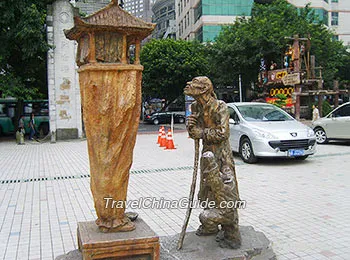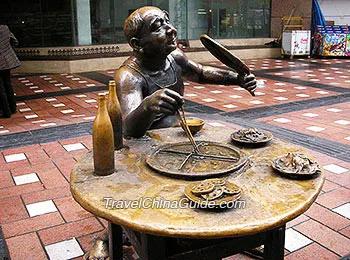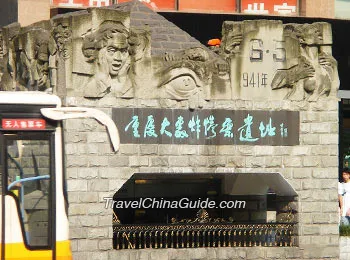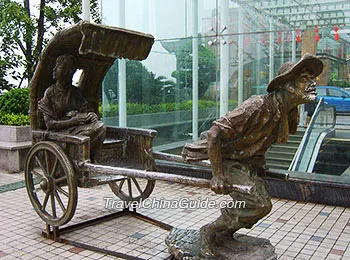Chongqing History & Culture
 Chongqing is located at the center of the ancient Bayu Area which is also the birthplace of Bayu Culture, a historical and cultural city in China with more than 3,000 years of history. About 20 to 30 thousand years ago, human beings had moved to this area, thereby marking the start of Chongqing's long history.
Chongqing is located at the center of the ancient Bayu Area which is also the birthplace of Bayu Culture, a historical and cultural city in China with more than 3,000 years of history. About 20 to 30 thousand years ago, human beings had moved to this area, thereby marking the start of Chongqing's long history.
Name Origin of Chongqing

Ba Kingdom
The Ba Kingdom reached its heyday from the last years of the Spring and Autumn Period (770 BC - 476 BC) to late Warring States Period (476 BC - 221 BC), during which it's bronze culture had reached its zenith. However, the fortification of Chongqing didn't start until 316 BC according to the annals of history. At that time, Ba and Shu rivaled each other and Ba asked for help from the Qin State. The Qin conquered the Shu Kingdom and spared Ba Kingdom, too. The general of the Qin troop, Zhang Yi, conducted major new construction projects. He was the first person in history to truly build the city including the impressive fortification of Chongqing. Until the year of 316 BC of the middle Warring State period, the Ba Kingdom had existed for 800 years.

Ba Culture
Representatives of Bayu Culture
Ba people were well known for their bravery and dash as well as being good at singing and dancing. It was said in ancient records that Ba troops always sang and danced while marching to their crusade against the Shang Dynasty. During the early Han Dynasty (206BC-220AD), Bayu Dance was introduced to the imperial palace, becoming a royal court dance for appreciation, reception of envoys and guests and also official rites. This kind of dance gradually disappeared after the Tang Dynasty (618-907), and yet it was still popular among common people.
Folk songs of Ba people were also famous not only in local areas but also in the neighboring Chu State in ancient times. Chongqing people still sing of their lovely mountains and rivers. Work songs of boatmen are a part of the colorful folk civilization of Chongqing.
 Bayu dance and songs are considered to be the most important elements of this culture. Additionally, Ba people brewed their own fine wine, had their own burial ceremonies (boat coffin, hanging coffin and other kinds of burials). They had symbolized character, totems, bronze sculptures, fascinating legends and myths. These are all symbols of this culture.
Bayu dance and songs are considered to be the most important elements of this culture. Additionally, Ba people brewed their own fine wine, had their own burial ceremonies (boat coffin, hanging coffin and other kinds of burials). They had symbolized character, totems, bronze sculptures, fascinating legends and myths. These are all symbols of this culture.Chongqing as a capital
Capital of Ba Kingdom: in 1066BC of the Zhou Dynasty.
Capital of Xia Kingdom: In 1363, the general Ming Yuzhen of peasant rebel army cleaned up the power of the Yuan Court in Sichuan and proclaimed himself emperor of the Xia Kingdom.
Secondary capital of the Republic of China: In 1937 when the Sino-Japanese War erupted, the National Government moved to Chongqing later and made this city as the assistant capital.
- Last updated on Aug. 20, 2019 -